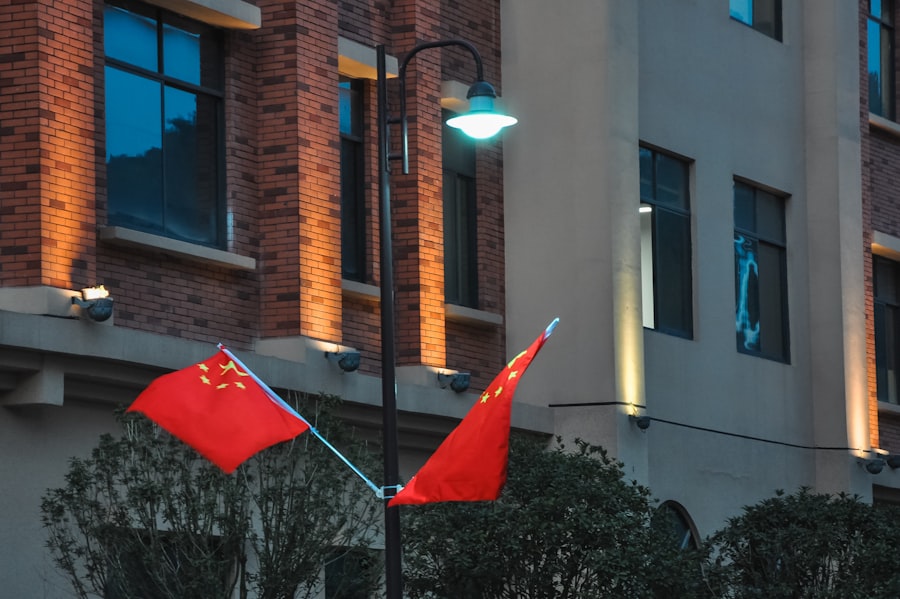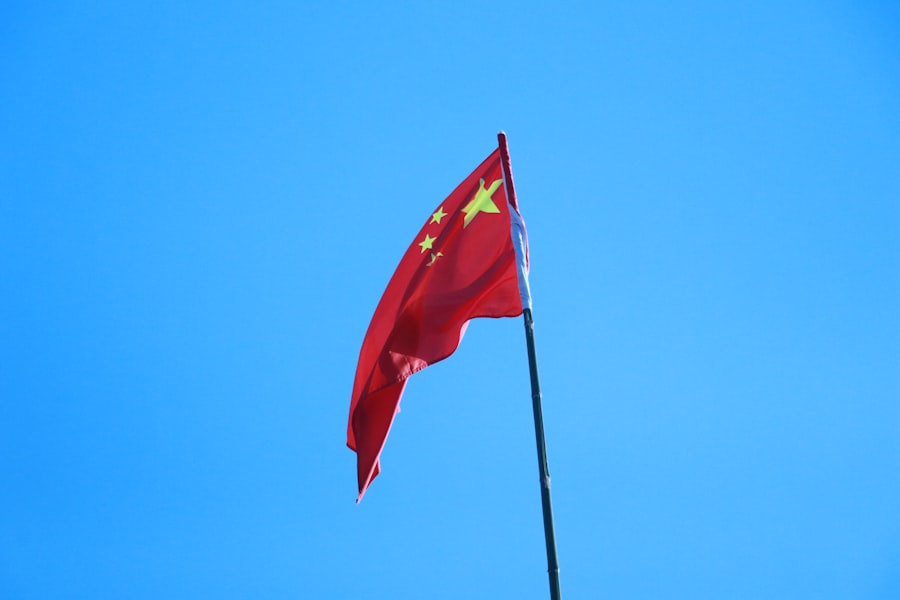The origins of the US-China space rivalry can be traced back to the late 20th century, a period marked by significant geopolitical shifts and technological advancements. Following the end of the Cold War, the United States emerged as the undisputed leader in space exploration, having successfully landed astronauts on the Moon and established a robust presence in low Earth orbit with the Space Shuttle program. Meanwhile, China, which had been largely isolated from the global space community, began to develop its own space capabilities.
The launch of its first satellite, Dong Fang Hong 1, in 1970 marked a significant milestone for China, but it was not until the 1990s that the country began to invest heavily in its space program. As China’s ambitions grew, so did its technological prowess. The successful launch of the Shenzhou spacecraft in 2003, which carried the first Chinese astronaut into space, signaled a new era in China’s space exploration efforts.
This achievement not only showcased China’s growing capabilities but also ignited a sense of competition with the United States. The rivalry intensified as both nations sought to assert their dominance in space, leading to a complex interplay of cooperation and competition that would shape their relationship for decades to come.
Key Takeaways
- The US-China space rivalry has its origins in geopolitical competition and technological advancement.
- Key milestones in US and Chinese space exploration include the moon landings and the development of space stations.
- The race for lunar exploration is driven by national pride and the potential for scientific discovery and resource extraction.
- Space technology plays a crucial role in national security, including surveillance and communication capabilities.
- International cooperation and competition in space are influenced by political alliances and economic interests.
Key Milestones in US and Chinese Space Exploration
Throughout the years, both the United States and China have achieved remarkable milestones in their respective space programs. The United States has a storied history of exploration, beginning with the Mercury and Gemini programs in the early 1960s, which laid the groundwork for the Apollo missions. The crowning achievement of these efforts was the Apollo 11 mission in 1969, when Neil Armstrong and Buzz Aldrin became the first humans to set foot on the Moon.
This monumental event not only solidified America’s position as a leader in space exploration but also served as a symbol of technological prowess during the Cold War. In contrast, China’s journey into space has been characterized by rapid advancements and strategic planning. After launching its first astronaut in 2003, China continued to make significant strides with its Tiangong space station program, which aims to establish a permanent human presence in low Earth orbit.
The successful docking of Shenzhou spacecraft with Tiangong modules demonstrated China’s growing capabilities in crewed spaceflight and orbital operations. These milestones reflect not only technological achievements but also national pride and aspirations for global influence.
The Race for Lunar Exploration

The race for lunar exploration has emerged as a focal point in the US-China space rivalry, with both nations setting ambitious goals for returning to the Moon. The United States has reignited its lunar ambitions through NASA’s Artemis program, which aims to land “the first woman and the next man” on the lunar surface by the mid-2020s. This initiative is not merely about exploration; it is also a strategic move to establish a sustainable human presence on the Moon and pave the way for future missions to Mars.
The Artemis program reflects America’s commitment to maintaining its leadership in space exploration while fostering international partnerships. On the other hand, China has made significant strides in lunar exploration with its Chang’e program. The successful landing of Chang’e 4 on the far side of the Moon in 2019 marked a historic achievement, as it was the first mission to explore this uncharted territory.
China’s ambitions extend beyond mere exploration; they aim to establish a lunar research station by the 2030s. This competition for lunar dominance underscores not only technological capabilities but also national pride and aspirations for scientific discovery.
The Role of Space Technology in National Security
| Metrics | Data |
|---|---|
| Number of Satellites | Over 2,000 active satellites in orbit |
| Space-based Surveillance | Monitoring of potential threats and activities |
| Communication Networks | Facilitating secure and reliable communication for military and government |
| GPS and Navigation | Critical for military operations and national security |
| Space Situational Awareness | Tracking and monitoring of objects in space to prevent collisions and protect assets |
Space technology plays a crucial role in national security for both the United States and China. For the U.S., space assets are integral to military operations, providing critical capabilities such as satellite communications, reconnaissance, and navigation. The Pentagon has recognized the importance of maintaining superiority in space, leading to increased investments in military space programs and the establishment of the United States Space Force in 2019.
This new branch of the military underscores the recognition that space is a contested domain where strategic advantages can be gained or lost. China, too, views space as a vital component of its national security strategy. The country has made significant investments in developing advanced satellite systems for military applications, including reconnaissance and missile warning capabilities.
Additionally, China’s growing presence in space is seen as a means to enhance its global influence and assert its position as a major power. As both nations continue to develop their military capabilities in space, concerns about potential conflicts and escalation have become increasingly pronounced.
International Cooperation and Competition in Space
While competition between the United States and China dominates discussions about their respective space programs, there are also instances of international cooperation that highlight the complexities of their relationship. Historically, both nations have engaged in collaborative efforts with other countries on various space missions. For example, NASA’s International Space Station (ISS) program has involved partnerships with multiple nations, including Russia, Japan, and Europe.
However, China’s exclusion from this collaborative framework has fueled its desire to establish its own independent space station. Despite these collaborative efforts, competition remains at the forefront of US-China relations in space. Both nations are vying for leadership in emerging technologies such as satellite communications and space exploration missions.
This competition often manifests itself through diplomatic tensions and concerns about technology transfer and intellectual property theft. As both countries navigate this intricate landscape of cooperation and competition, it becomes increasingly clear that their actions in space will have far-reaching implications for global governance and international relations.
The Impact of the US-China Space Rivalry on Global Politics

The US-China space rivalry has significant implications for global politics, influencing diplomatic relations and shaping alliances among other nations. As both countries seek to assert their dominance in space exploration and technology, smaller nations are often caught in the crossfire of this competition. Countries that rely on partnerships with either the United States or China may find themselves navigating complex geopolitical landscapes as they weigh their options for collaboration.
Moreover, this rivalry has prompted other nations to bolster their own space programs as they seek to assert their independence and enhance their strategic capabilities.
As a result, the US-China rivalry is not only reshaping bilateral relations but also influencing global power dynamics as nations strive to carve out their own roles in an increasingly competitive arena.
The Commercialization of Space and its Role in the Rivalry
The commercialization of space has emerged as a significant factor in the US-China rivalry, with both nations recognizing the economic potential of private sector involvement in space exploration. In the United States, companies like SpaceX and Blue Origin have revolutionized access to space through innovative technologies and cost-effective launch solutions. This burgeoning commercial sector has not only accelerated advancements in space exploration but has also positioned American companies at the forefront of global competition.
China is also making strides in commercializing its space industry, with state-owned enterprises leading efforts to develop satellite technologies and launch services. The Chinese government has actively encouraged private sector participation in its space program, aiming to foster innovation and enhance competitiveness on a global scale. As both nations vie for leadership in this emerging market, their rivalry extends beyond government agencies to include private companies that are shaping the future of space exploration.
The Future of US-China Space Relations
The future of US-China space relations remains uncertain as both nations navigate an increasingly complex geopolitical landscape. While competition is likely to persist, there are also opportunities for collaboration that could benefit both countries and advance scientific knowledge. Joint missions or cooperative agreements on specific projects could pave the way for greater understanding and trust between these two powers.
However, achieving meaningful collaboration will require addressing underlying tensions and concerns related to national security and technology transfer. Both nations must find common ground on issues such as transparency and mutual respect for each other’s interests if they hope to foster a more cooperative environment in space exploration.
The Ethical and Legal Implications of the Space Rivalry
The US-China space rivalry raises important ethical and legal questions that must be addressed as both nations continue to expand their activities beyond Earth’s atmosphere. Issues such as resource exploitation on celestial bodies, orbital debris management, and military activities in space pose significant challenges that require international cooperation and regulatory frameworks. As private companies increasingly participate in space exploration, questions about accountability and responsibility become paramount.
Establishing clear legal guidelines governing activities in outer space will be essential to prevent conflicts and ensure that all nations can benefit from shared resources without compromising safety or security.
The Role of Space Exploration in Advancing Science and Technology
Space exploration serves as a catalyst for advancing science and technology across various fields. Both the United States and China have made significant contributions to our understanding of fundamental scientific principles through their respective missions. From studying planetary geology to conducting experiments in microgravity environments, these endeavors have yielded valuable insights that extend beyond national borders.
Moreover, advancements made through space exploration often lead to technological innovations that benefit society as a whole. Developments in materials science, telecommunications, and environmental monitoring have all been influenced by research conducted in outer space. As both nations continue their pursuit of knowledge beyond Earth’s atmosphere, they contribute not only to their own national interests but also to humanity’s collective understanding of the universe.
The Potential for Collaboration and Conflict Resolution in Space
Despite ongoing tensions between the United States and China regarding their respective space programs, there remains potential for collaboration that could lead to conflict resolution. Engaging in dialogue about shared interests—such as planetary defense or climate monitoring—could foster goodwill between these two powers while addressing pressing global challenges. Establishing frameworks for cooperation could also help mitigate risks associated with military activities in space.
By promoting transparency and communication regarding military capabilities and intentions, both nations could work towards reducing misunderstandings that may lead to conflict. Ultimately, finding common ground will be essential for ensuring that space remains a domain for peaceful exploration rather than a battleground for geopolitical rivalries. In conclusion, while competition between the United States and China continues to shape their respective approaches to space exploration, there are opportunities for collaboration that could benefit both nations and advance scientific knowledge on a global scale.
Addressing ethical considerations and establishing legal frameworks will be crucial as humanity ventures further into outer space. As both countries navigate this complex landscape, their actions will undoubtedly have lasting implications for international relations and global governance in an era defined by rapid technological change.
The US-China rivalry in space has been a topic of intense discussion and analysis, as both nations strive for dominance in the final frontier. This competition is not just about technological advancements but also about geopolitical influence and national security. An insightful article that delves into the intricacies of this rivalry can be found on Real Lore and Order.
For a deeper understanding, you can read more about it here.
WATCH THIS! 🚀 Why The Moon Is The Next Battlefield: The Geopolitics of Cislunar Space
FAQs
What is the current status of the US-China rivalry in space?
The US and China are engaged in a competitive rivalry in space, with both countries striving to demonstrate their technological capabilities and establish dominance in space exploration and satellite technology.
What are the key areas of competition between the US and China in space?
The key areas of competition between the US and China in space include satellite technology, space exploration missions, lunar and Mars exploration, and the development of space weapons and military capabilities.
How does the US-China rivalry in space impact international relations?
The US-China rivalry in space has the potential to impact international relations by influencing alliances and partnerships in space exploration and satellite technology. It also raises concerns about the militarization of space and the potential for an arms race in orbit.
What are the implications of the US-China rivalry in space for global space exploration?
The US-China rivalry in space has the potential to drive advancements in space technology and exploration, but it also raises concerns about the potential for conflict and competition to hinder international cooperation and collaboration in space exploration efforts.
What are the risks associated with the US-China rivalry in space?
The risks associated with the US-China rivalry in space include the potential for an arms race in orbit, the militarization of space, and the disruption of international cooperation and collaboration in space exploration and satellite technology.
